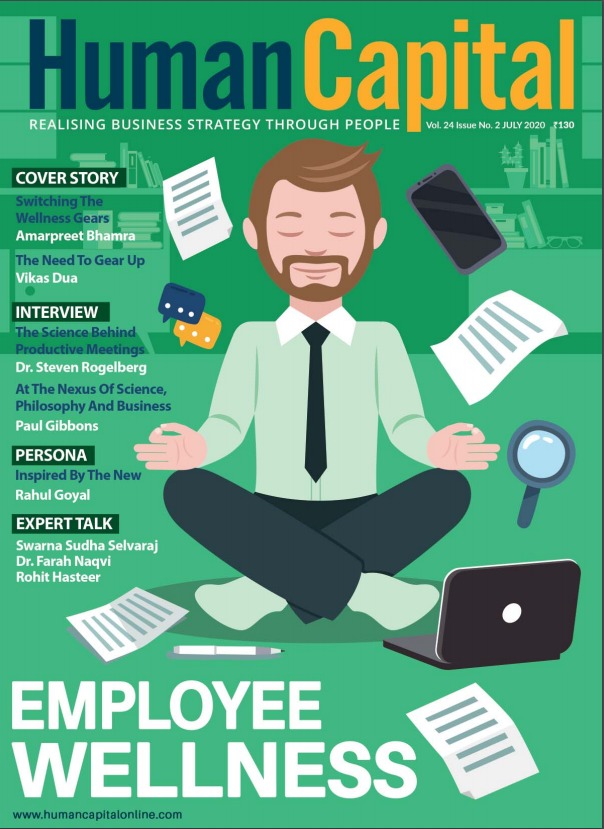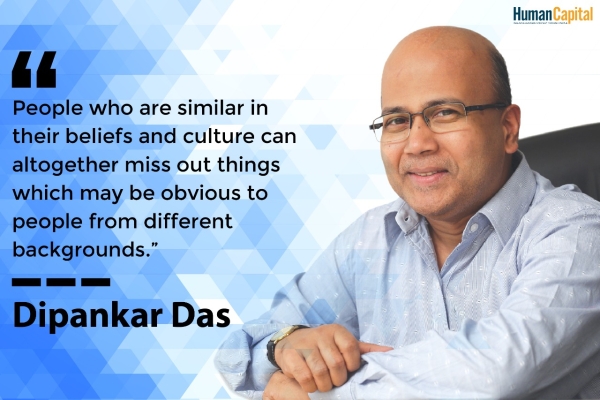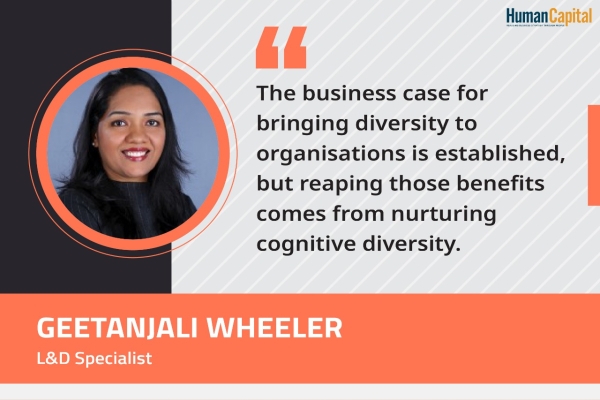Onboarding is the process of assisting new employees to become fully integrated, contributing members of your organisation. It is, in fact, a small question with bigger implications. And, the fact that it is generally not given the attention it deserves is unfortunate. But mature organisations very well understand the implications of a good induction intervention, and ensure that the induction experience is indeed welcoming, thus making a new employee feel valued.
Apart from connecting at the emotional level, the induction programme is also a great opportunity to familiarize new employees with the vision, mission, processes and procedures of the organisation in one go. This is a great input as it shrinks the time taken by the employee to be productive, and improves employee productivity, directly impacting the company’s bottomline.
The perceptual and emotional takeaways
Apart from the hard stuff, every company has its own unique culture, which remains elusive when it comes to tangibles. It is something you feel your way through. The induction sets the tone for a new employee to get a whiff of that culture. When in a new place, it is human to be extra observant and sensitive to everything, and, this is embedded in the mindset of the newer employees as well. As it often happens, it is not what you profess as your values that get accepted, rather it is how you conduct yourself. Induction is an opportunity for employees to gauge the company from that standpoint. How the presenters interact- what is shared, how they are welcomed, the kind of welcome kit (if any) is given, how smoothly the whole event is conducted, does it stick to timelines, or is it only paper- are keenly observed by the new hires. If there is a big vision along with grand plans of growth which are shared with a new employee, but the joining and induction experience is not smooth, then the employee absorbs the subtle messages of dissonance. How the on-ground experience goes, is in a way similar to the moments of truth in a customer service context. The employee quickly forms an opinion about the company, irrespective of what it presents through slides, or what is said by the leaders. The perceptual and emotional takeaways are very important.
Often onboarding is simply understood as the two or three days of introductory sessions that take place. However, many organisations have a Buddy Plan or a Quarter long support plan for new hires to ease their joining and assimilation into the new organisation. Often, companies do not expect the new hire to be able to furnish reports or deliver for one month to a quarter. This is particularly true and useful in contexts where the work requires a significantly high level of domain expertise or the organisation has unique processes and methods, such as in consultancies, or specialized manufacturing.
Why is it important to get onboarding right?
A lot of money goes into hiring and training new employees, and hence, it is important to onboard them correctly, so that they can achieve 100% productivity in a reasonable time. When analyzing attrition, organisations have one category, which is early attrition. This is broadly the attrition level of people who left within the first 12 months of joining the organisation. A good part of this specific variant of attrition is attributable to a weak induction programme. New hires make the decision to stay back or develop a long term plan on the basis of what they initially undergo. The millennials and the Gen Y are in particular less tolerant of unpleasant experiences. Hunter Douglas, an American company improved its onboarding process to address the problem of early attrition, and it dropped from a whopping 70% to 6%.
Onboarding is not just HR’s Baby
The common perception that the induction programme is the sheer responsibility of HR, or more specifically, a responsibility which needs to be handled by Learning and Development is a misnomer. The organisation has to put the best foot forward to welcome new employees. They inevitably interact with a wide cross section of employees and all touchpoints should be sensitized to the need to welcome and integrate new employees.
Ten guiding solutions
1. How can a successful onboarding process be designed from the perspective of a new hire? It is important to design the entire process from the perspective of the new hires. Seeking inputs from them while designing the process flow would be advisable.
2. How can new hires be made to feel valued and welcome? This is critical to the success of the process. One of the organisations I worked for, would send a welcome mail to the parents of the Graduate Engineers who would join. It made a huge difference to the way the new hires along with their families perceived the company.
3. How can the orientation programmes be made more inspiring? This can be a great time to tell stories. The Tata Group companies share the great legacy of Jamshetji Nussarwanji Tata and inspiring stories of how the company grew.
4. How can employees understand the big picture and their role in it to be communicated clearly? The said and unsaid Dos and Don’ts of the company need to be percolated here.
5. How can it be more fun and interactive is a question everyone should strive to answer? Use motivational talks, scavenger hunts, team building games etc. Often joining batches remain connected with each other and the bonding made during the induction cements many relationships.
6. What information is best delivered through the intranet? It is often not possible to deliver the entire induction in a physical environment and one needs to blend it with eLearning. The reference material, videos, etc. could be put as e-content, while the Q&A, leadership address could be done in person, to create a greater impact.
7. How can new employees be encouraged to solicit help or give feedback is what every designer should ensure that the feedback is coming in and being scrutinized for ways to improve induction further. A feedback can duly be taken after the first quarter to check their level of integration and comfort.
8. How can a mentoring programme be made more effective? Mentoring programmes go a long way in integrating new hires, but need a lot of detailed attention, before being implemented. This preparation needs to be ensured and the additional responsibility of the Mentors need to reflect in their KRAs.
9. How can Managers be prepared to do their part well? They need to be sensitized about their role and trained to coach and support the new hires. They should also be held accountable and provided with the requisite support, reporting templates and recognition for doing the job well.
10. Last but not the least, people will not remember what you said, or what you did, but they will remember how you made them feel. And that feeling will be the bedrock of a long career in your organisation.
Has COVID-19 forever changed the way we live and work?
Trending
-
SBI General Insurance Launches Digital Health Campaign
-
CredR Rolls Out 'Life Happens' Leave For Its Employees
-
Meesho Announces 30-Week Gender-Neutral Parental Leave Policy
-
Microsoft Unveils Tech Resilience Curriculum To Foster An Inclusive Future
-
60% Indian Professionals Looking For Job Change Due To COVID: Survey
-
SpringPeople And Siemens Collaborate For Digital Transformation Push
-
86% Professionals Believe Hybrid Work Is Essential For Work Life Balance: Report
-
Almost 1 In Every 3 People's Personal Life Affected Due To Work Stress
-
Meesho Rolls Out Reset And Recharge Policy For Employees
-
80% Of Talent Leaders & Academics Say Pandemic Changed Skill Needs For Youth: Report
-
Hero Electric Rolls Out 'Hero Care' Program For Employees
-
Human Capital In Collaboration With ASSOCHAM Hosts Virtual Conference
-
IKEA India, Tata STRIVE Collaborate To Create Employability And Entrepreneurship Opportunities
-
SAP India, Microsoft Launch Tech Skilling Program for Young Women
-
DXC Technology, NASSCOM Collaborate For Employability Skills Program
-
Lenskart To Hire Over 2000 Employees Across India By 2022
-
Mindtree Launches Learn-and-Earn Program
-
Tata AIA Extends 'Raksha Ka Teeka' To Its Employees
-
Swadesh Behera Is The New CPO Of Titan
-
NetConnect Global Plans To Recruit 5000 Tech Professionals In India
-
Hubhopper Plans To Hire 60% Of Indian Podcasters By 2022
-
Corporate India Needs More Women In Leadership Roles: Report
-
Aon to Invest $30 Million and Create 10,000 Apprenticeships by 2030
-
Tech Mahindra Launches ‘Gift a Career’ Initiative for Upskilling of Youth
-
40% Women Prefer Flexible Working Options in Post-COVID World: Survey
-
3 out of 4 companies believe they can effectively hire employees virtually: Report
-
Vodafone , CGI and NASSCOM Foundation launch digital skills platform
-
Odisha: Bank, postal employees to deliver cash for elderly, differently-abled persons
-
Skill India launches AI-based digital platform for "Skilled Workforce"
-
Hiring activity declines 6.73% in first quarter: Survey
-
70% startups impacted by COVID-19 pandemic
-
Bajaj Allianz Life ropes in Santanu Banerjee as CHRO
-
Over 70 Percent MSMEs look at cutting jobs to sustain businesses
-
93 Per Cent employees stressed about returning to office post-lockdown
-
Johnson & Johnson India announces family benefits for same gender partners
-
Indian firms turning friendly towards working mothers
-
Welspun India names Rajendra Mehta as new CHRO
-
Wipro partners with NASSCOM to launch Future Skills platform



Human Capital is niche media organisation for HR and Corporate. Our aim is to create an outstanding user experience for all our clients, readers, employers and employees through inspiring, industry-leading content pieces in the form of case studies, analysis, expert reports, authored articles and blogs. We cover topics such as talent acquisition, learning and development, diversity and inclusion, leadership, compensation, recruitment and many more.
Subscribe Now












































Comment